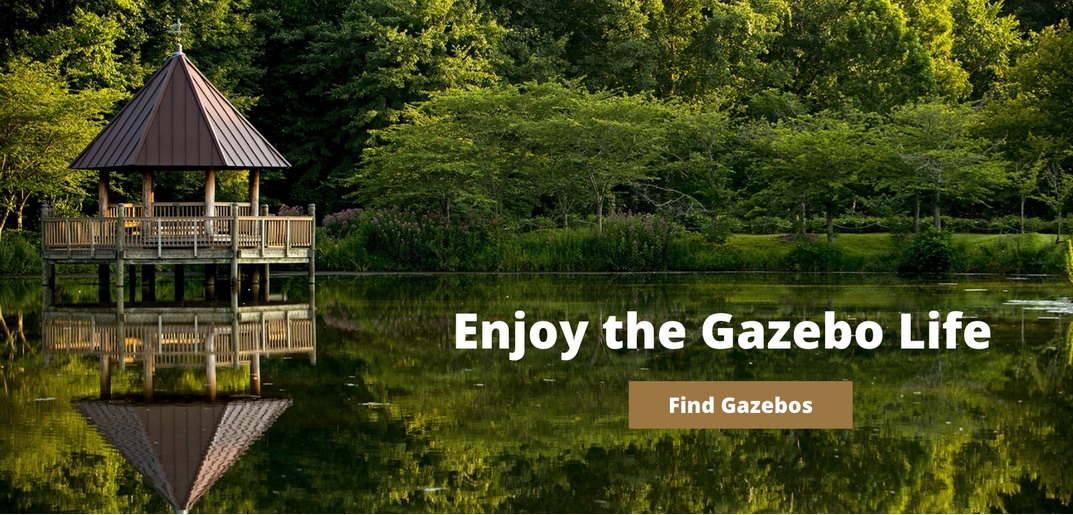5 Tips for Picking out a Gazebo
- Written by Josh Matthews

Gazebos are an outdoor asset guaranteed to make your yard a more appealing and relaxing place. They make for the ideal chill spots given their access to sunlight, fresh open air, and their aesthetic contribution to the landscape. Gazebos are known to improve the aesthetic appeal of your home and allow the occupants to enjoy being outside. These homely structures may also be used as ideal grounds for celebrations such as weddings, family gatherings, and reunions. Their multipurpose nature makes them a viable consideration for nearly every homeowner. Being able to shelter from the sun in an outdoor setting has never been a bad idea. Setting up a gazebo also ensures proper yard space utilization, mitigating wastage by adding a functional structure to your property. With a gazebo, each day and season presents an opportunity for outdoor benefits. There’s lots of gazebo guides out there but this article focuses on some of the most useful tips to consider when picking a gazebo.
Tips to consider
Setting up a gazebo may seem like an easy endeavor. However, just like a typical construction project, there are a number of things to consider before embarking on this project. Below are some of the tips that will guide you seamlessly through this process.
Purpose
It would be best if you determined why you need a gazebo before venturing into getting one. Gazebos can be used for a myriad of functions. They are ideal for celebrations, parties, barbecues, meditation, relaxation, outdoor sporting activities, working out, gatherings and meetings. Once their intended use is clearly determined, it will be very easy to pick out the most suitable option for you.
Location
Location is usually one of the most key considerations prior to embarking on any project. The same sentiment can be applied to gazebos. You will need to precisely determine the possible locations for your gazebo before doing anything else. This may entail picking out a spot on your property that would be best suited for this structure. Gazebos can be set up on patios, the backyard, a deck, or even the front yard. Your choice of location should also be based on the intended use of the structure. It would be best to determine if you want a discretely situated structure or a prominently apparent one. Gazebos intended for events and celebrations are typically located at the center of the yard. Gazebos for intimately personal use are better placed in secluded spots on the property with a similarly lined ambiance. Location is a vital consideration as it will directly determine the utility you can derive from your structure once it is set up.
Spacing and size
The spacing and location of a gazebo are complementary considerations. Once you have picked out a spot on your property, you will need to determine just how much space it should occupy. While determining space, it would be best if you also considered the intended use for the structure. For example, an intimate gazebo for personal use and meditation would typically be smaller when compared to those meant for celebrations and gatherings.
Material
Gazebos are built using a variety of materials. The most commonly used materials for these structures are wood, vinyl, fabrics, and in some cases, stone and cement. Wooden gazebos are ideally preferred by people looking to blend their gazebo into the natural element in their yards. These gazebos are further complemented by wooden furniture, which adds to their appeal and luxurious feel. Wood also tends to be a functional material as it is durable, easy to maintain, and can be used for various finishes.
PVC is fast being adapted for building projects, hence their application to gazebos. PVC is also durable, lightweight, easy to maintain, and waterproof. In addition, PVC gives the structure the feel and functionality of wood while being a financially efficient alternative. Fabrics are mostly used for temporary gazebo structures, given their lightweight and portable nature. The most used fabrics include denim, cotton, and canvas. A temporary mobile structure is ideal for a gazebo, given the ever-changing weather conditions outside.
Design
There are many possible ways to design your gazebo. Some of the most common gazebo designs include pop-up gazebos, wall-backed gazebos, brick and mortar gazebos, floating gazebos, canopy gazebos, and dome gazebos. Wall-backed gazebos tend to be affordable as they only require the installation of an exterior wall’s backing. In addition, their compact nature makes them easy to construct and also adds to their aesthetic appeal. These gazebos can also be easily modified and are best suited to small backyard spaces.
These days, it is possible to go for pop-up kits that can be an interactive DIY project for your family. You may also consider a canopy gazebo that allows the natural elements into the structure for a more outdoor experience. Dome gazebos offer immense aesthetic appeal, given their varying designs. Brick and Mortar gazebos are more permanent structures recognized for their durability and luxurious feel. Finally, if you have a water body on your property, you may consider a floating gazebo.
While considering design, flooring is likely to come up. Gazebos can be set up with a variety of flooring options. They can be put up with or without flooring. They can also be conveniently placed on already established slabs and decks. It is also possible to purchase a gazebo that comes complete with its own floor.
Getting the right design for your gazebo will guarantee you the best possible aesthetics while still being extremely appealing to the eye and the soul.
Conclusion
Gazebos are a fantastic feature to add to your property. They offer a place for unmatched outdoor relaxation. This utility can, however, only be derived from a properly selected gazebo. The tips listed above are a guaranteed guide to choosing the most appropriate gazebo for your outdoor needs.





